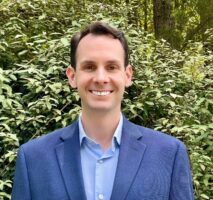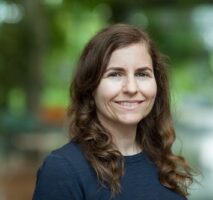The Engagement Matters Podcast
Season 1, Episode 1
Shawnlei Breeding, the EagleWatch Program Manager at the Audubon Center for Birds of Prey, shares her strategies for engaging volunteers and stakeholders to help protect eagles and other raptors across The State of Florida.
Listen now
Click on the audio player below to listen to this episode.
(Listen on any of these platforms:
Apple Podcasts, Spotify, Amazon Music, iHeartRadio, PlayerFM, Podbean)
Background
In the United States, few birds are as iconic as the bald eagle. Their image is engrained in our culture: they’re printed on our money, they’re drawn into the official seals for different branches of government, and they’re a symbol of freedom and courage. Yet, through a combination of hunting, habitat loss, and insecticides (that contaminated the eagle’s food supply), their numbers plummeted so low that they were placed on the endangered species list in 1978.
The Mission
With a network of over 700 volunteers, the EagleWatch Program monitors more than 1,200 bald eagle nests spread across the entire state. The data that is collected flows into maps, charts, and reports that state and local officials rely on when making decisions about residential and commercial development. That same data also helps conservationists like Shawnlei Breeding, the EagleWatch Program manager at the Audubon Center for Birds of Prey, focus the Center’s efforts. Shawnlei describes EagleWatch as “a community science program, which means that these conservation questions are so large and can’t really be answered by only a few scientists or conservation people because it takes everyone working together.” Volunteers attend intensive virtual training both in the science of non-invasively monitoring the eagles and in the GIS technology that they’ll use to collect information. The trained volunteers then become Shawnlei’s extended “eyes and ears” that are geographically closer to the eagle nests than she can be.
Engagement tips and tricks
Find a “hook”
A major part of engagement often involves finding the one thing that can capture people’s attention quickly. This “hook” varies from issue to issue but always ties closely to the core challenge that the organization faces. In the case of the EagleWatch Program, Shawnlei often enlists the help of resident ambassador eagles at the Center for Birds of Prey: eagles that “are trained to go on the glove and you can take them to schools or have tours,” as Shawnlei describes. Rescued in the wild as chicks with injuries that made them non-releasable, these eagles became permanent residents at the Center and have gone through special training. Their role is to help engage different stakeholder groups by putting an unforgettable face to the cause of conservation. This helps bridge the gap between a person seeing something interesting and learning valuable information which changes behavior or causes them to get involved. The Center’s ambassador eagles help educate the public about the issues facing the eagles and recruit volunteers to the cause.
Use location
Localizing issues helps engage different groups by making an issue even more relatable. An eagle nest located a hundred miles away is interesting, but a nest in my neighborhood makes the eagles and their needs more relatable. An underprivileged elementary school sits next to a park in a predominantly African American neighborhood in downtown Orlando where a pair of nesting eagles has decided to live. This serendipitous pairing of an eagle nest and elementary school helped Shawnlei engage with the schoolchildren and their parents. Children from an after-school club of “young scientists” have even taken a field trip to visit the nest and learn about the data collection process. As a result of the kids’ excitement in the eagle nest and conservation work, adults – parents, grandparents, and other adults – have started getting involved in the volunteer work.
Personalize the issue
It seems inherent in our nature that when an issue feels more personal that we tend to care more about it. Similarly to how the children at the elementary school connected with their nest, people in Florida and around the world have watched “Harriet” the eagle build her nest and raise her young via a live-stream camera that was installed over her nest in 2011. The live feed helped share Harriet’s story to a world-wide audience, making her plight representative of the conservation efforts going into all bald eagles and other threatened or endangered species. In 2022 that support grew stronger when Harriet suddenly disappeared, leading to “a really traumatic experience for all the people that have followed the nest,” Shawnlei explains. Through the live feed, people were able to see how Harriet lived, how she built her nest, how she fed and protected her chicks, and ultimately how she raised her chicks to be independent adult eagles. We lived alongside Harriet’s family and became personally invested in her survival because of how easy it was to see the parallels between our lives and hers. Connections like this have grown the ranks of volunteers within the EagleWatch program from a handful of people in the 1990’s to the 700+ that now participate.
Diversify your audience
Engagement is a challenge for most organizations that is often compounded by the complexities of people’s lives. If I’m struggling to pay my bills, live in an area with high pollution, and worry about my kids getting a good education, I’m unlikely to engage. I’m just too busy or preoccupied with other concerns. Knowing this, the goal is to figure out how to lower the barriers to engagement so that different groups of people have an equal likelihood of engaging the organization and sharing their unique perspectives and insights. This challenge is one that Shawnlei is very familiar with. The Center for Birds of Prey facility is located on the border between two very different cities: Maitland and Eatonville, Florida. The City of Maitland’s households are 2.5 times wealthier, and the population is 8 times larger than Eatonville. Maitland’s residential population is also nearly 75% White. Eatonville is much less affluent, smaller, nearly 90% African American, and has been struggling recent decades to retain its rich history as one of the first cities founded in the U.S. as a refuge for newly freed slaves after the Emancipation Proclamation. Creating a “one-size-fits-all” method for both groups to participate in the Center’s programs would be easier for the Center but would likely not help make the voices and perspectives of people from both cities be heard. The Center regularly pursues grants to cover program fees so that children from Eatonville can attend and get exposed to the programming and activities at the Center, such as the Center’s summer camps. It also helps bring adults (the children’s parents) into the Center, enabling their voices to be heard equally also. Similarly, to the grant-enabled summer camp program, Shawnlei and other Center staff visit underprivileged schools in the region, advertise on local Hispanic radio stations in Spanish, and participate in community events. More engagement from different types of people helps the Center find new and unique ways to support eagles and all raptors. It also helps bring new volunteers into the EagleWatch Program, which expands the reach and quality of data collection.
Plan and adapt
Engagement doesn’t just happen. It’s the result of deliberate planning and adapting to changing conditions. Shawnlei describes her strategy as one of “sowing the seeds” of engagement in different stakeholder groups over time. She continually searches for new ways of getting the word out to the public in the hopes that some conservation-minded individuals will get involved in the Center’s work. Perhaps unsurprisingly, many new volunteers come to the program after meeting current volunteers while out watching a nest. Shawnlei has seen the growth in the volunteer community happen because of “that grassroots, word of mouth, and some media attention as well.” Her goal is to share information in different ways so that different groups of people can consume it in whatever way resonates with them, even if it’s through a current volunteer that is sharing their experience with a neighbor or friend. Shawnlei has also learned from the eagles that when an opportunity presents itself, you must recognize it and move quickly. This can be as organic as a parent approaching her for more information after a school visit or as coincidental as a pop culture reference to eagles that suddenly drives traffic to the Center’s website. Regardless of the reason why people might reach out, Shawnlei advises taking a long-term approach to engagement while also staying aware of current events and trends.
Support volunteers
Volunteers need to feel that their work matters and that they’re making a difference. In the EagleWatch Program, volunteers sign up to monitor nests twice a month between October and May after they complete their training. Shawnlei has discovered that it’s important to provide feedback and show appreciation over the monitoring season so that volunteers see both an immediate and long-term return on their commitment. During trainings and throughout the year, she reminds volunteers that monitoring the eagle’s nests should be fun and that she doesn’t “want [volunteers] doing this out of guilt or because you think you have to because that type of motivation is never going to sustain you.” During the monitoring season, she sends email updates to stay in communication with her volunteers, which help show her gratitude and quantify the work that is being done. She seeks input on the technology tools that the volunteers use so that they can be adjusted and made as easy to use as possible. At the end of the monitoring season, she holds a volunteer appreciation event where volunteers are shown the results of their efforts over the last 8 months. This continual engagement of the volunteers helps to reinforce the sense of community that exists even as volunteers are geographically spread across the state.
Leverage technology
Like many programs over time, EagleWatch has evolved its technology tools that support its work. In 1992 when the program started, volunteers attended in-person trainings and would record nest observations on paper forms that had to be mailed back and forth. Staff at the Center would then transcribe the data from the paper forms into spreadsheets, a very time-consuming and laborious process. With help from the National Audubon Society’s GIS team, Shawnlei built a customized survey in ArcGIS Survey123 that automatically updates the nest map in real time. Volunteers access the digital form on their phone or tablet and record their observations using pre-defined values for most indicators and smart fields which adjust based on answers to previous questions. This helps increase the effectiveness of volunteers as they work and improves the quality of the data that is collected. This data flows into the interactive nest map which is used by local, state, and federal government stakeholders when they need to make decisions about permitting and development in Florida. The map and data are also available to volunteers and the public to view which helps increase transparency efforts by building trust. More recently, the EagleWatch Program has transitioned to an ArcGIS Hub site that showcases the program and the work done by the volunteers in a more story-centric format. Shawnlei describes the ArcGIS Hub site as bringing other benefits namely by enabling volunteers to “have their own username and login which has saved a significant amount of time and data clean up for me.” She can track the work of individual volunteers, quality control data that has been submitted, and communicate directly with volunteers through the site.
Results
In 2007, the population of bald eagles in the United States had recovered so significantly that they were removed from the Endangered Species list. This dramatic improvement is due to many factors including more conscious development practices, the banning of hazardous chemicals like DDT, and the work of conservation groups like the Audubon Center for Birds of Prey’s EagleWatch Program. The volunteers that helped make this recovery possible and the hundreds more that have joined EagleWatch since, continue to monitor the bald eagle population and support state and federal protections.
Learn More or Get Involved
If you live in Florida and want to get involved with the EagleWatch program to help bald eagles or other birds of prey, visit the Center for Birds of Prey’s website here.
If you don’t live in Florida, you can visit the National Audubon Society’s website to learn about programs and volunteer efforts in your community.




Article Discussion: